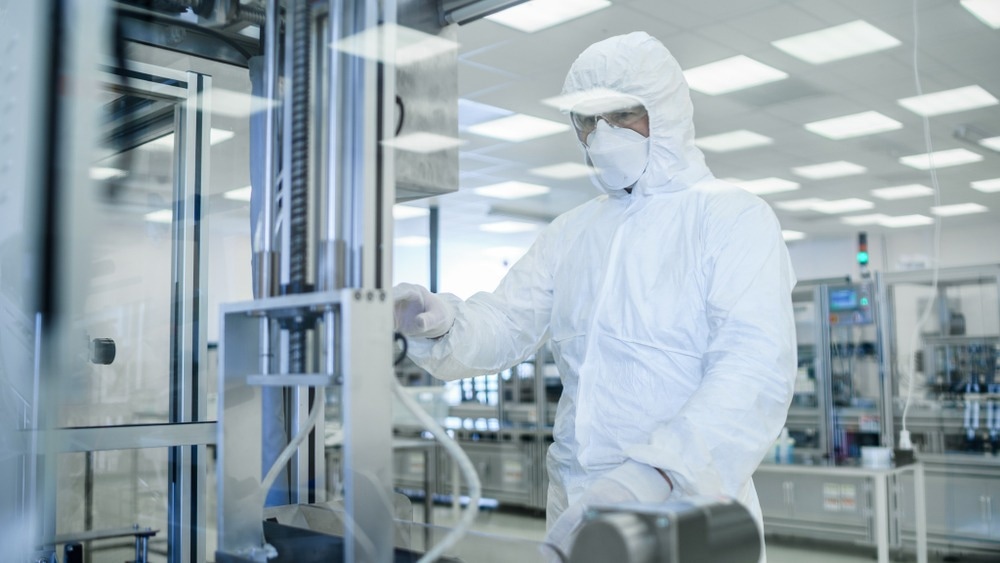Nanomaterials such as nanotubes are increasingly used in medical devices, as their benefits are being recognized across the industry. This article focuses on how nanomaterials are being used in the manufacturing of medical devices.

Image Credit: Gorodenkoff/Shutterstock.com
Why Are Nanomaterials Used in Medical devices?
Medical devices have become an essential part of daily life and represent an expanding market. Applications for medical devices range from diagnostic tools such as mechanical contraceptives, hypodermic needles, biosensors, software and implants to diagnostic equipment like magnetic resonance imaging (MRI) systems.
The materials used to make medical devices must be compatible with the biological surfaces they come into contact with, especially when such devices are used on and inside the human body. It is here that emerging nanomaterials can provide such desired properties over traditional materials.
These properties include increased optical strength, surface conjugation, antibacterial and antimicrobial activities, bioavailability, and biocompatibility. Another advantage is a nanomaterial's high surface-area-to-volume ratio, which aids in better loading and delivery of therapeutic or diagnostic reagents.
For example, nanofibrous materials have been investigated as skin cell regeneration scaffolds because they can resemble the extracellular matrix's (ECM) ultrastructure.
The incorporation of nanoparticles (1-100 nm) offers the fabrication of miniaturized biosensors, allowing for the use of smaller analytical samples for various biochemical analyses and point-of-care diagnostics.
Challenges of Incorporating Nanomaterials into Medical Devices
Nanomaterials possess enhanced magnetic, chemical, biological, and mechanical properties and, as a result, are incorporated into various medical devices. While applications now include artificial bone grafts, bandages, and wound dressings, the increased use of nanomaterials has raised more scientific challenges and regulatory scrutiny.
A suitable nanomaterial must be evaluated before its utilization in any medical device. To describe a material and predict how it will behave inside an organism or the human body, physical-chemical characterization of nanomaterials, including the determination of size and chemical composition, is crucial.
Nanomaterial-based devices generate a vital contact surface that interacts with the body, which could lead to either beneficial outcomes or toxicological concerns. Therefore, primary and secondary tests, clinical trials must be carried out to check for genotoxicity, cytotoxicity, systemic toxicity, biocompatibility, and cutaneous or mucosal irritation.
Investigating the pharmacokinetic characteristics of a nanomaterial's possible degradation is also necessary. Researchers and manufacturers must take into account how the addition of nanomaterials affects device design, risk, toxicity, and the final product, before submitting nano-based medical devices for FDA or other authority approval.

Image Credit: Vink Fan/Shutterstock.com
Commercial Examples of Nanomaterials in Medical Devices
Medical devices with nanomaterial incorporation have already entered the market and have proven to have several positive health effects. The following are a few examples of currently available nanotechnology-based devices in the marketplace.
Nanovis created FDA approved Nano FortiFix® pedicle screw system to be used in orthopedics. This technology uniquely delivers comparative data in the label that evaluates the relative performance of human mesenchymal stem cells and osteoblasts on a bioceramic nanotube surface against both traditionally used surfaces.
SimpleSenseTM was introduced by the American company Nanowear. The remote diagnostic platform has FDA clearance. The non-invasive undergarment detectors used in the proprietary carbon nanotube, cloth-based nanosensor device track a myriad of patient vitals, including heart rate and rhythms, respiratory rate, physical activity, and lung volume.
The data collected produces real-time analytics powered by artificial intelligence (AI) in the form of simple-to-understand reports for doctors, offering a more intelligent manner to provide care to patients remotely.
Nanovision offers a novel nanotechnology approach for retinal prosthesis to cure degenerative retinal disorders. They have constructed arrays of light-sensitive optoelectronic silicium nanowires, which can be bundled into tiny electrodes to constitute the system's structural foundation for neuronal retinal stimulation.
The integrated circuitry connected to the nanowire arrays gives feedback control over the light modulation of the electrical stimulation pulse from the nanowires and also powers the device so that the output activity baseline can be adjusted. This offers a method of adjusting to various levels of ambient light.
Future Outlook
Medical device manufacturers in the healthcare industry can develop devices like nanoscale sensors for point-of-care testing owing to the successful incorporation of nanomaterials such as iron oxide nanoparticles, gold nanoparticles, nanotube arrays, and nanowires.
The multitude of companies using nanomaterials to make medical devices highlights the growth and scope of these ground-breaking materials. There are sizable market prospects in medical diagnostics as well as other products, which will entice more organizations to experiment with using nanomaterials for developing cutting-edge nano-devices.
The pharmaceutical industry is distinguished by a significant level of innovation. Hence, additional research on this subject may uncover novel therapeutic, diagnostic, or even theranostic approaches.
Despite the enormous potential it offers, the subject lacks specific pharmaceutical quality control and regulatory concerns that are not thoroughly addressed.
Eight criteria are applied in the literature to describe products containing nanomaterials; however, this is still insufficient to define products from a pharmacological standpoint. As a result, additional scientific research and policy analysis must be conducted in the future.
References and Further Reading
Damodharan, J. (2021) Nanomaterials in medicine – An overview. Materials Today: Proceedings, 37(Part 2), pp. 383–385. doi.org/10.1016/J.MATPR.2020.05.380
Halamoda-Kenzaoui, B., Geertsma, · Robert, Pouw, · Joost, Prina-Mello, A., Carrer, M., Roesslein, M., Sips, A., Klaus, Weltring, M., Spring, K., & Bremer-Hoffmann, S. (2022) Future perspectives for advancing regulatory science of nanotechnology-enabled health products. Drug Delivery and Translational Research, 12, pp. 2145–2156. doi.org/10.1007/s13346-022-01165-y
Pallotta, A., Clarot, I., Sobocinski, J., Fattal, E., & Boudier, A. (2019) Nanotechnologies for Medical Devices: Potentialities and Risks. ACS Applied Bio Materials, 2(1), pp. 1–13. https://doi.org/10.1021/acsabm.8b00612
Nanovis. Nanovis. [Online]. Available at: https://nanovistechnology.com/nanotechnology/nanovis-ti-surface-technology
Nanowear inc. SimpleSense. [Online]. Available at: https://www.nanowearinc.com/simplesense
Magforce ag, the nanomedicine company. The NanoTherm® therapy.
Elux medical. NanoLipo. [Online]. Available at: https://eluxnanolipo.com/nanolipo/
Nanovision. Our Technology. [Online]. Available at: https://nanovisionbio.com/technology/
Disclaimer: The views expressed here are those of the author expressed in their private capacity and do not necessarily represent the views of AZoM.com Limited T/A AZoNetwork the owner and operator of this website. This disclaimer forms part of the Terms and conditions of use of this website.